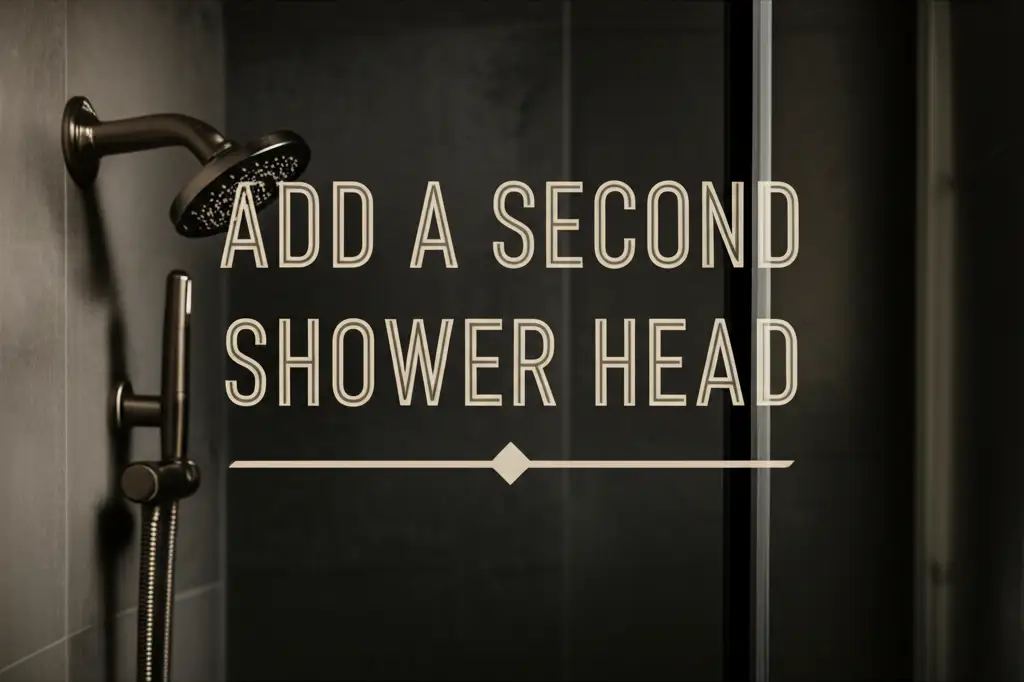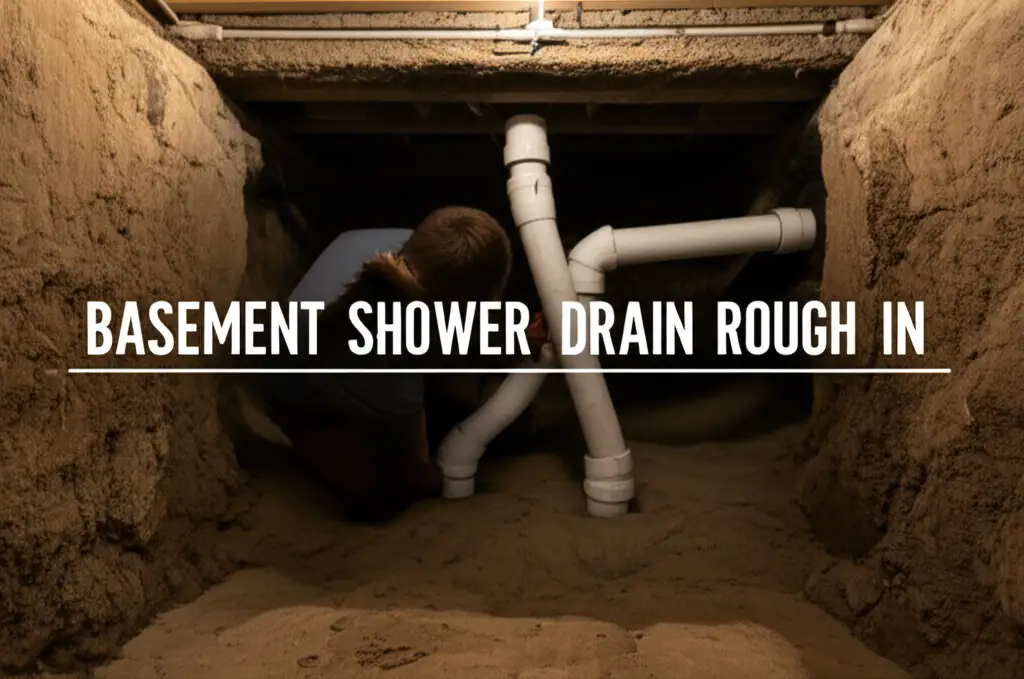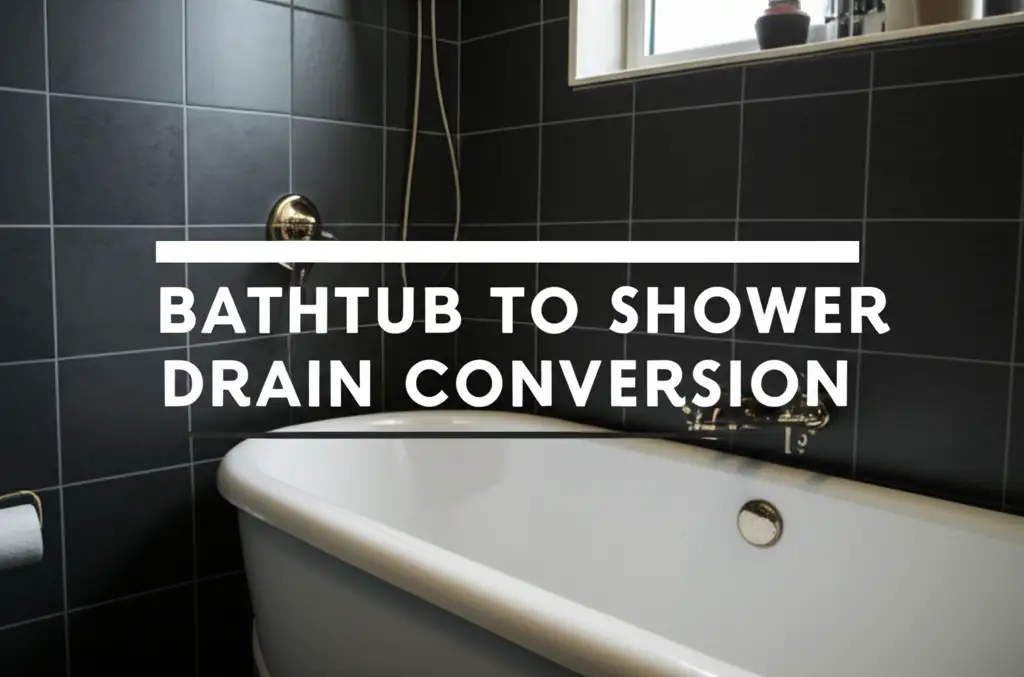· Elira Thomsen · Bathroom Renovation · 20 min read
Add A Second Shower Head

Enhance Your Shower: How to Add a Second Shower Head
Imagine stepping into your shower, not just for a quick rinse, but for a truly immersive and comforting experience. Have you ever wished for more water coverage, better pressure, or the flexibility of a handheld spray alongside a fixed one? For many homeowners, the answer is a resounding yes. You can turn your daily routine into a spa-like retreat. It is simpler than you think to add a second shower head.
This article explores the many benefits of having two shower heads. We discuss different types of dual shower systems available. We also cover important considerations before you begin. You will learn about installation options, whether DIY or professional. We also provide a step-by-step guide for those ready to tackle the project. Finally, we offer advice on maintaining your new dual setup. Get ready to transform your shower.
Takeaway
- Adding a second shower head significantly improves comfort and efficiency in your bathroom.
- Various systems exist, from simple diverters to full integrated panels.
- Assess your water pressure and plumbing before starting any work.
- You can often install a second shower head yourself with basic tools.
- Regular cleaning keeps your dual shower heads working well.
Adding a second shower head involves installing a diverter valve onto your existing shower arm. This valve allows water to flow to either your main shower head, a new second head, or both simultaneously. This upgrade enhances your showering comfort and versatility.
Why Consider Adding a Second Shower Head?
Adding a second shower head is more than just a plumbing change. It transforms your daily routine. Many people find the single stream of water insufficient. A second head solves this problem. It brings multiple benefits to your home and personal comfort.
Enhanced Comfort and Luxury
A dual shower head system offers unmatched comfort. You can enjoy full body coverage. One head can target your shoulders while the other rinses your lower body. This eliminates the need to spin around to get wet everywhere. It creates a truly luxurious experience, much like a spa. Many people appreciate this level of indulgence at home.
The increased water coverage feels more satisfying. It also speeds up rinsing, especially for long hair. Imagine standing under a gentle rain from one head and a powerful spray from the other. You control your shower experience. This personal touch makes a big difference. It turns a chore into a moment of relaxation.
Improved Efficiency for Couples or Families
Sharing a shower becomes much easier with a second shower head. Couples can shower together comfortably. Each person gets their own stream of water. This saves time in busy households. No more waiting turns for the water.
Families also benefit greatly. Parents can quickly rinse children without needing them to stand directly under the main spray. It makes bath time quicker and more pleasant for everyone. For households with varied showering preferences, this setup is perfect. One person may like a strong spray, while another prefers a soft rain. A dual system meets both needs.
Increased Home Value
Upgrading your bathroom can significantly increase your home’s appeal. A dual shower head system is a modern feature. It stands out to potential buyers. This upgrade suggests a well-maintained and thoughtful home. It shows attention to detail.
Bathrooms are key selling points for homes. Features that add luxury and functionality are highly desirable. A dual shower is a unique selling proposition. It sets your bathroom apart from others. This investment can yield good returns. It makes your home more attractive in the market.
Types of Dual Shower Head Systems
You have several choices when deciding to add a second shower head. Each type offers different features and installation methods. Understanding these options helps you choose the best system for your bathroom. Your existing setup and desired functionality guide this decision.
Diverter Valve Systems
This is the most common and often simplest way to add a second shower head. A diverter valve attaches to your existing shower arm. It has two outlets. One outlet connects to your original shower head. The other connects to a new shower arm and second head. A small lever or knob on the diverter lets you direct water. You can send water to the first head, the second head, or both.
Diverter valves are easy to install for DIY enthusiasts. They require minimal plumbing changes. You just screw the valve onto the existing arm. Then you attach the two heads. This option is cost-effective. It offers great flexibility. Many people choose this for its simplicity and effectiveness. You can have a fixed head and a handheld spray.
Slide Bar Systems
Slide bar systems combine a fixed shower head with a handheld one on an adjustable bar. The handheld shower head mounts to a bracket. This bracket slides up and down the bar. This allows you to adjust the height of the handheld spray. A diverter is usually built into the main water supply or the fixed shower head.
This system is very versatile. It is great for families with different height users. You can also use the handheld spray for specific tasks. These tasks include rinsing shower walls or washing pets. Installation may be slightly more involved than a simple diverter. It requires drilling holes for the slide bar. However, the added functionality is often worth the effort.
Integrated Panels
Integrated shower panels are more comprehensive units. They include multiple shower heads, body jets, and temperature controls all in one panel. These panels mount directly to the wall. They offer a luxurious, spa-like experience. Water flows from various angles, providing full body coverage.
Installation for integrated panels is complex. It often requires professional plumbing work. The panel needs dedicated water lines. It also needs secure mounting. While a larger investment, these systems create a statement bathroom. They deliver the ultimate showering experience. This option is for those seeking a complete overhaul.
Handheld Combinations
Many fixed shower heads come with an integrated handheld component. These are often called “combo” units. The handheld sprayer docks directly into the main shower head fixture. A small switch on the head diverts water. You can use the main head, the handheld, or both.
This is an easy way to get dual functionality. It uses just one connection point to the wall. Installation is as simple as replacing a single shower head. You just screw the combo unit onto your existing shower arm. This is a good choice for renters or those wanting a quick upgrade. It provides convenience without extensive renovation.
Key Considerations Before You Begin Installation
Before you begin the process to add a second shower head, careful planning is essential. Several factors impact the success and functionality of your new setup. Ignoring these points can lead to issues. These issues include poor water pressure or drainage problems. Taking time for assessment ensures a smooth installation.
Water Pressure and Plumbing Assessment
This is perhaps the most critical factor. Your home’s existing water pressure must be adequate. Adding a second shower head divides the water flow. If your pressure is already low, two heads will worsen the situation. You might end up with two weak trickles. Check your home’s water pressure. You can buy a simple gauge that attaches to an outdoor spigot. A reading of 40-60 PSI is generally good.
Consider your plumbing lines. Older homes might have narrow pipes. These pipes restrict water flow. If you have concerns, consult a plumber. They can assess your system. They can also recommend upgrades if needed. Ensuring good pressure is vital for a satisfying dual shower experience.
Bathroom Size and Layout
The physical space in your shower stall matters. Two shower heads require adequate room. You need enough space for two people to stand comfortably. If your shower is small, two fixed heads might feel cramped. A better option for smaller spaces might be one fixed head and one handheld on a slide bar.
Think about the placement of the second head. Where will it be most functional? Does it need its own dedicated arm? Will it hit the wall or shower door? Measure carefully. Visualize how the new setup will fit. Planning the layout prevents awkward installations later.
Drainage Capacity
More water means more drainage. Your shower drain must handle the increased volume. Most standard drains can cope with two shower heads. However, older or partially clogged drains might struggle. If your drain is already slow, address that issue first. You do not want water pooling in your shower.
Consider your hot water heater capacity as well. Two shower heads use more hot water. Ensure your heater can keep up. If not, you might run out of hot water quickly. This is especially true for longer showers or multiple users. A larger hot water tank might be a necessary upgrade.
Budget and Materials
Set a realistic budget for your project. Costs vary widely based on the system type. A simple diverter and second handheld head are inexpensive. An integrated panel system can be very costly. Factor in the cost of the shower heads themselves. Also consider the diverter, shower arms, and any extra tools.
Choose materials that match your existing bathroom fixtures. Finishes like chrome, brushed nickel, or oil-rubbed bronze are common. Ensure consistency for a cohesive look. Do not forget sealant tape and plumber’s putty. These small items are crucial for leak-free installation. Investing in quality parts prevents future problems.
DIY vs. Professional Installation: What to Know
Deciding whether to install a second shower head yourself or hire a professional depends on several factors. Your comfort level with plumbing, the complexity of the desired system, and your budget all play a role. Both options have their pros and cons.
When to DIY
You can often add a second shower head yourself if you have basic DIY skills. This is especially true for simple diverter setups or combo units. These installations usually involve screwing new components onto existing plumbing. You do not need to open walls. You save money on labor costs. This makes DIY an attractive option.
You should feel comfortable working with tools. You must also understand how to turn off your water supply. The task involves sealing pipe threads properly to prevent leaks. Many homeowners successfully complete this project. Online tutorials and product instructions provide clear guidance. If your project involves only surface-level changes, DIY is a good choice. You can find helpful resources on maintaining a clean bathroom, which can also include tips relevant to DIY projects, such as how to properly clean a plastic shower curtain or even how to maintain clean tile shower floors.
When to Hire a Pro
For more complex installations, hiring a professional plumber is wise. This includes installing a new shower arm that requires opening walls. It also includes systems that involve rerouting pipes or changing valve types. Integrated shower panels almost always need professional help. Incorrect plumbing can lead to costly water damage.
A professional plumber has the right tools and expertise. They can assess your existing plumbing system. They can ensure proper water pressure and drainage. They can also guarantee the work meets local building codes. While more expensive, professional installation provides peace of mind. It ensures the job is done correctly and safely. If you have any doubts about your ability, or if the project goes beyond simple surface changes, call a plumber.
Step-by-Step Guide to Adding a Second Shower Head
Are you ready to add a second shower head to your bathroom? This guide walks you through the process for a common diverter-based setup. This assumes you are adding a second head from your existing shower arm. Remember to work carefully and precisely.
Gather Your Tools and Materials
Before you start, make sure you have everything ready. This prevents interruptions during the installation. You will need:
- New Shower Head(s): Choose your preferred main and second heads.
- Diverter Valve: This piece directs water flow.
- Second Shower Arm (if needed): A short pipe to extend for the second head.
- Adjustable Wrench or Pliers: For tightening connections.
- Plumber’s Tape (PTFE tape): Essential for sealing threaded connections.
- Rag or Towel: For wiping up any drips.
- Bucket: To catch water when disconnecting the old head.
- Optional: Pipe Cutter: If you need to modify existing copper pipes.
- Optional: Thread Sealant: In addition to or instead of plumber’s tape, some prefer liquid sealant.
Having all items prepared makes the process smoother.
Turn Off Water Supply
This step is crucial for safety and preventing floods. Locate the main water shut-off valve for your house. It is often in the basement, utility closet, or near the water meter. Turn the valve clockwise to stop the water flow. If you cannot find the main shut-off, turn off the water to your bathroom specifically, if it has a dedicated shut-off. After turning off the water, open your shower faucet. Let any remaining water drain out. This relieves pressure in the pipes.
Remove Existing Shower Head (if applicable)
If you have an existing shower head, remove it. Use your adjustable wrench or pliers to grip the shower head base. Turn counter-clockwise to loosen it. Some older heads might be very tight. You may need extra force. Be careful not to damage the shower arm coming out of the wall. Once loose, unscrew the head completely. Catch any remaining water in your bucket. Wipe the threads clean on the existing shower arm. You can also take this opportunity to thoroughly clean your existing shower fixtures, perhaps learning how to clean onyx showers or other surfaces.
Install Diverter Valve
Now, it is time to install the diverter valve. Wrap plumber’s tape around the threads of your existing shower arm. Wrap it clockwise 3-5 times. This creates a watertight seal. Screw the diverter valve onto the shower arm. Hand-tighten it first. Then, use your wrench to tighten it further. Do not overtighten, as this can strip threads or crack pipes. The diverter should be firmly in place. Orient the diverter so the outlets face where you want your shower heads.
Connect Second Shower Arm/Head
Next, prepare the second shower arm (if you are using one). Wrap plumber’s tape around the threads of one end of the new shower arm. Screw this end into one of the outlets on your diverter valve. Again, hand-tighten, then use a wrench. Ensure it is secure and pointing in the desired direction.
Now, prepare both shower heads. Wrap plumber’s tape around the threads of both the main shower arm (from the diverter) and your new second shower arm. Screw each shower head onto its respective arm. Hand-tighten, then give a final snug turn with the wrench. Ensure both heads are facing correctly.
Test for Leaks and Adjust
Once everything is connected, it is time to test. Slowly turn your main water supply back on. Go to your bathroom and check for any leaks around the connections. Turn on your shower faucet. Check each connection point carefully. Turn the diverter valve to switch between the two heads. Test both heads individually and then together. If you see any drips, turn off the water immediately. Tighten the leaking connection slightly more. You might need to re-tape and re-tighten if the leak persists. Small adjustments can often fix minor drips. After ensuring no leaks, you can enjoy your new dual shower head system. Remember, a clean bathroom is a happy bathroom; consider tips on how to clean travertine tile showers for maintenance.
Maintaining Your Dual Shower Head System
Installing a second shower head is just the first step. Proper maintenance ensures your new system provides years of trouble-free performance. Neglecting maintenance can lead to reduced water pressure, clogs, or leaks. Regular care keeps your shower heads spraying strong and looking good.
Regular Cleaning and Descaling
Hard water deposits are the enemy of shower heads. Minerals like calcium and magnesium build up over time. This clogs the spray nozzles. It reduces water flow and makes sprays uneven. You should clean your shower heads regularly. Aim for once a month or whenever you notice reduced performance.
- Simple Wipe-Down: Use a soft cloth and mild soap to wipe the exterior. This removes soap scum and surface grime.
- Vinegar Soak: For deeper cleaning, remove the shower heads if possible. Soak them in a solution of equal parts white vinegar and water. Let them soak for a few hours or overnight. The vinegar dissolves mineral deposits. For stubborn clogs, use an old toothbrush to scrub the nozzles.
- Toothpick Method: For nozzles that won’t come clean with soaking, use a toothpick or small wire. Gently poke into each spray hole to dislodge blockages.
Regular cleaning prevents severe buildup. It keeps your water flowing freely. You can also clean your shower space, including the shower floor and walls, as part of this routine.
Checking for Leaks
Even after initial installation, check for leaks periodically. Temperature changes and daily use can loosen connections. A small drip can waste a lot of water over time. It can also cause mold growth or water damage.
- Visual Inspection: Look at all connection points. Check where the shower arm meets the wall. Check where the diverter connects. Check where the shower heads connect.
- Feel for Moisture: Run your hand along the connections. Even a slight dampness indicates a slow leak.
- Listen for Drips: Sometimes, you can hear a subtle dripping sound when the water is off.
If you find a leak, turn off the water supply. Tighten the connection gently with a wrench. If tightening does not work, you may need to reapply plumber’s tape. Unscrew the part, clean the threads, re-tape, and re-tighten. Addressing leaks promptly saves water and prevents bigger problems.
Addressing Water Pressure Changes
Over time, you might notice a change in water pressure. This can happen due to various reasons:
- Clogged Shower Heads: As mentioned, mineral buildup is a common culprit. Clean your shower heads thoroughly.
- Plumbing Issues: Problems in your home’s main plumbing lines can affect pressure. This could include blockages or pipe corrosion. If cleaning the heads does not help, consider a plumbing inspection.
- Municipal Water Issues: Sometimes, the issue is with your local water supply. Check with neighbors if they experience similar problems.
- Diverter Valve Wear: The diverter valve itself can wear out. Internal components might fail, leading to reduced flow. If your diverter feels stiff or does not switch water flow properly, it might need replacement.
Understanding the cause of pressure changes helps you fix the issue. Regular maintenance reduces the chance of these problems. It ensures your dual shower head system always performs at its best.
Elevating Your Shower Experience Beyond Two Heads
Adding a second shower head is a fantastic upgrade. However, you can do even more to enhance your daily shower. Think about other features that boost comfort, convenience, and luxury. These additions can make your bathroom a true sanctuary.
Complementary Upgrades
Consider adding features that work well with a dual shower setup. These upgrades improve the overall functionality and feel.
- Thermostatic Valve: This device maintains a consistent water temperature. No more sudden cold blasts or scalding hot spikes. It is great for safety and comfort, especially with multiple water sources.
- Bench or Seating: A built-in bench provides a place to sit. You can use it for shaving legs or simply relaxing. It adds to the spa-like feel.
- Improved Lighting: Good lighting can transform your shower space. Consider waterproof LED lights for an ambient glow. Dimmers allow you to set the mood.
- Storage Solutions: Shower caddies or built-in niches keep toiletries organized. This reduces clutter and makes the shower feel more spacious.
- Updated Surround Materials: If you are undertaking a larger renovation, consider new tiles or panels. Materials like natural stone or large format tiles create a luxurious look. Make sure you also know how to keep these materials clean, for instance, by knowing how to clean tile shower floors or how to clean travertine tile showers.
These small changes enhance your shower space. They complement your new dual heads.
Smart Shower Technology
Technology has entered the bathroom, too. Smart showers offer advanced controls for water temperature, flow, and even music.
- Digital Controls: Instead of knobs, digital panels allow precise temperature settings. You can program pre-set profiles for different users.
- Voice Control: Some systems integrate with smart home assistants. You can start your shower and set the temperature with your voice.
- Bluetooth Speakers: Built-in waterproof speakers allow you to enjoy music or podcasts. Your shower becomes a personal concert hall.
- Water Usage Tracking: Some smart systems monitor your water consumption. This helps you be more mindful of water use.
Smart features add a layer of convenience and luxury. They truly modernize your bathroom.
Aesthetics and Design
The look and feel of your shower space impact your experience. Think about design elements that create a cohesive and inviting atmosphere.
- Cohesive Fixtures: Choose finishes for your shower heads, faucets, and other hardware that match. Chrome, brushed nickel, or matte black create a unified look.
- Glass Enclosures: Replacing a shower curtain with a glass enclosure opens up the space. It gives a sleek, modern appearance. It also makes the bathroom feel larger.
- Plant Decor: Adding a few moisture-loving plants can bring life and freshness to the bathroom. They improve air quality and add a natural touch.
- Scented Elements: Use essential oil diffusers or shower steamers. These add aromatherapy benefits to your shower routine.
Paying attention to these details transforms your shower. It goes from a functional space to a relaxing retreat. You have created a place where you can unwind and refresh.
FAQ Section
Is it hard to add a second shower head?
Adding a second shower head is generally not hard for simple diverter setups. You connect a diverter valve to your existing shower arm. Then, you attach the two shower heads. This process requires basic tools and some plumbing tape. More complex installations, like those requiring new wall plumbing, need professional help.
Do I need a plumber to install a second shower head?
You do not always need a plumber to install a second shower head. Many common systems, like those with a diverter valve that screws onto your existing shower arm, are DIY-friendly. However, if your project involves opening walls, rerouting pipes, or if you are unsure about your plumbing skills, hiring a professional plumber is the safest choice.
Will adding a second shower head reduce water pressure?
Yes, adding a second shower head can reduce water pressure from each individual head because the water flow is divided between two outlets. If your home already has low water pressure, this reduction may be noticeable. For optimal performance, ensure your home has adequate water pressure before installing a dual system.
What types of diverters are best for dual shower heads?
The best type of diverter depends on your setup. A simple in-line diverter is excellent for adding a handheld to an existing fixed head. If you are modifying the shower arm directly, a T-diverter or an integrated valve diverter is common. Ensure the diverter matches your shower arm’s threading and material for compatibility.
How much does it cost to add a second shower head?
The cost to add a second shower head varies. A basic DIY setup with a simple diverter and two new shower heads might cost $50-$200 for parts. More elaborate systems, like integrated panels, can cost $500-$2000 or more. Professional installation adds labor costs, typically ranging from $200-$500 for standard jobs.
Can I add a second shower head to any shower?
You can add a second shower head to almost any shower. The feasibility depends on your current plumbing and desired system. Simple additions work well with existing shower arms. However, for complex setups or very old plumbing, you may need pipe upgrades or professional assistance. Always assess your specific bathroom setup first.
Conclusion
Adding a second shower head offers a significant upgrade to any bathroom. It transforms your daily routine into a more comfortable and efficient experience. We have explored the clear benefits, from enhanced luxury to improved convenience for multiple users. We also examined the various types of dual systems available, guiding your choice based on your needs and budget.
Careful planning is key. You must assess your water pressure, bathroom layout, and drainage. This ensures a successful installation. Whether you choose a DIY approach for a simple diverter system or hire a professional for a complex setup, the goal remains the same: a more enjoyable shower. Regular maintenance, including cleaning and leak checks, will keep your new dual shower head system performing its best. Consider adding smart technology or design enhancements to further elevate your space. Take the step to add a second shower head and experience the difference. Your bathroom will thank you.





